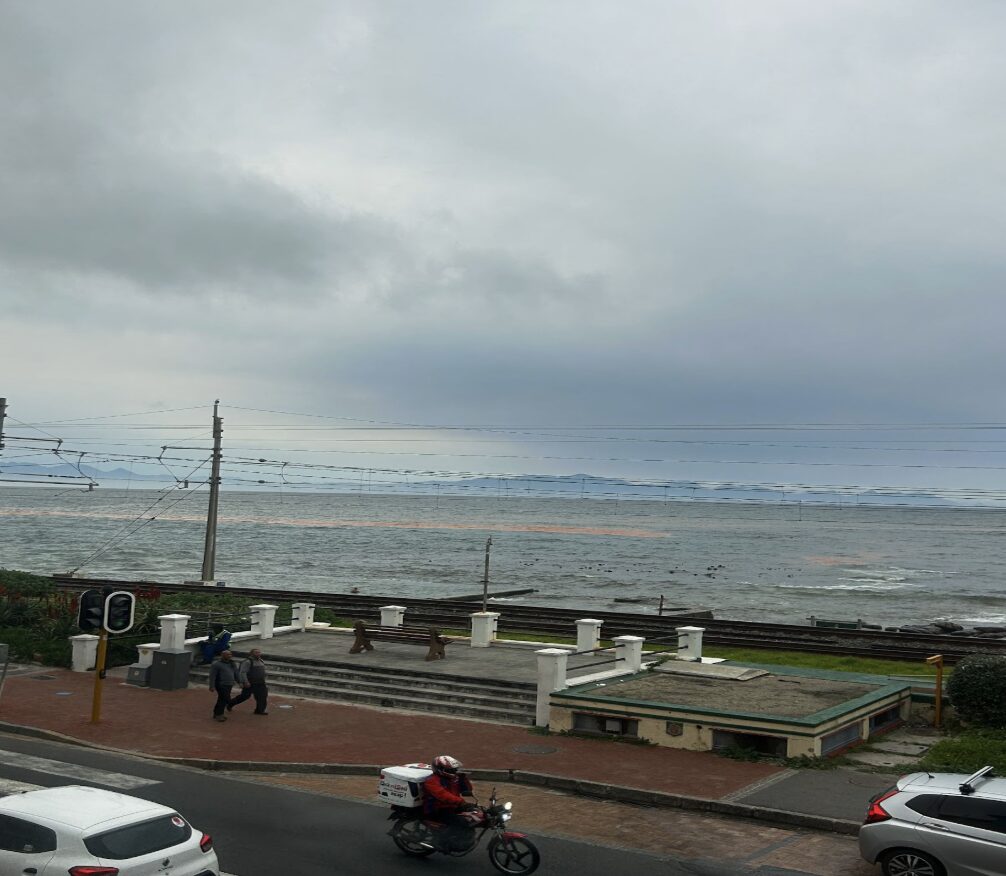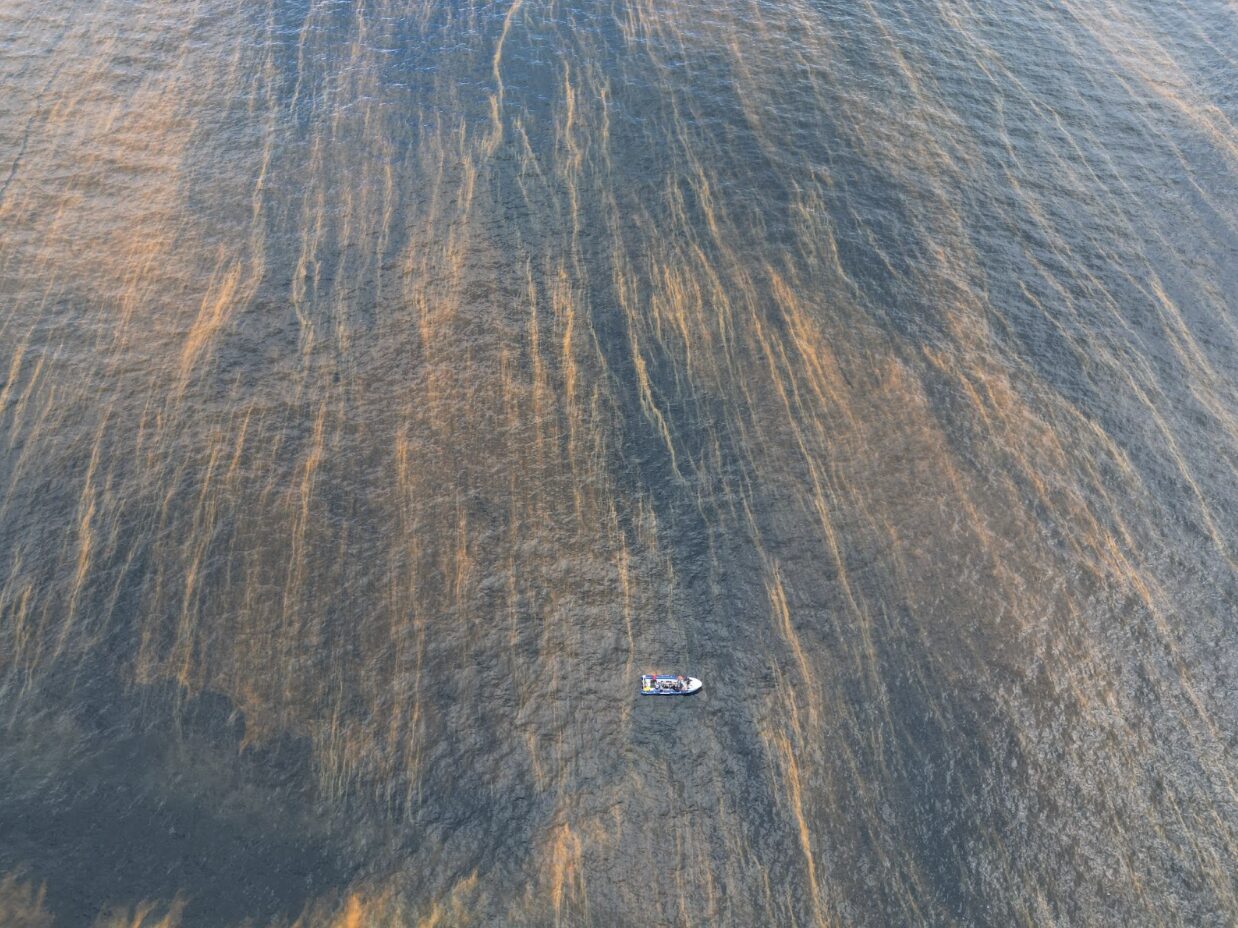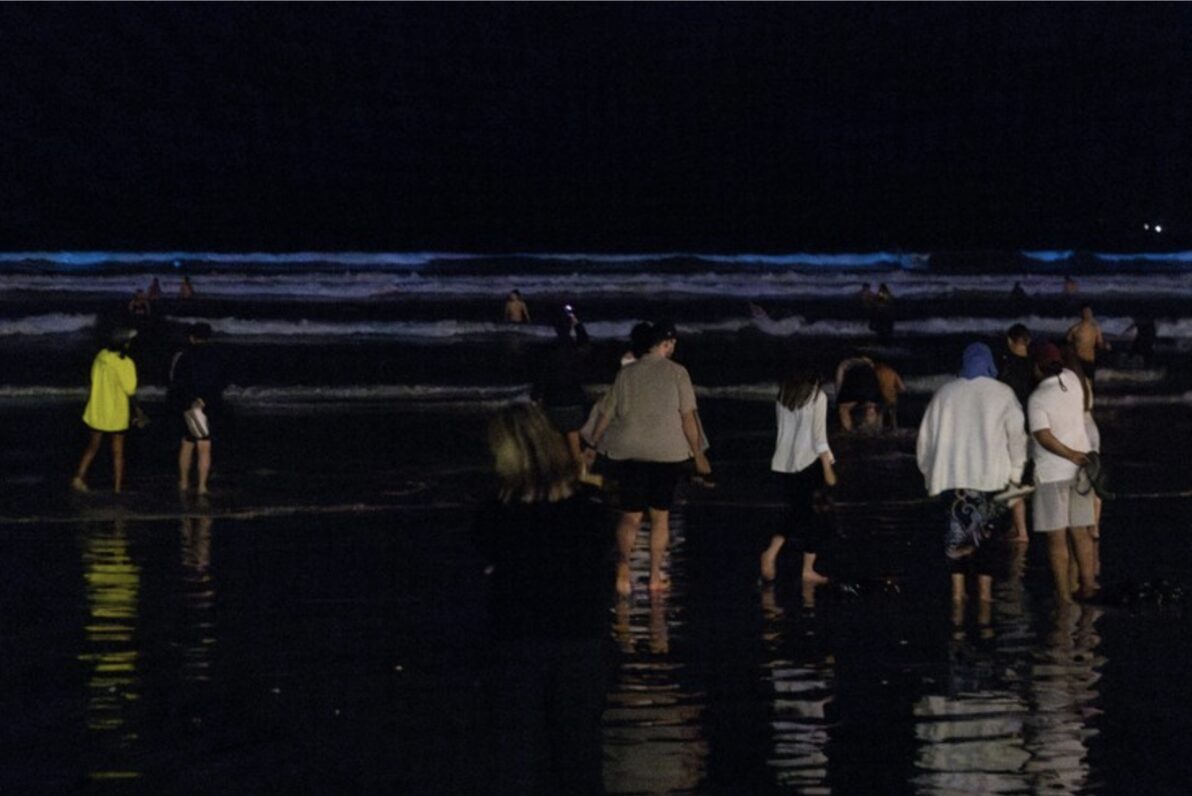Red tide on our doorstep
When the ocean suddenly shifts from its usual blue to shades of red, brown, or even green, it’s easy to think something strange is happening. However, this natural phenomenon, known as a red tide, is caused by a rapid increase in microscopic algae called phytoplankton. Under the right conditions, these tiny organisms multiply and can sometimes turn the water into a spectacle of colour.

Image of the red tide seen from the SOSF Shark Education Centre. Photo by Liat Dayan | © Save Our Seas Foundation Shark Education Centre.
What is a red tide?
Red tides are blooms of tiny plankton called dinoflagellates, which are microscopic marine organisms that drift in the water. They come in many fascinating shapes and sizes, and the one seen in False Bay is Noctiluca scintillans (commonly called sea sparkles).
What causes a red tide?
Red tides are natural events, but human activity often makes them worse. Nutrient-rich runoff from agriculture and pollution feeds the algae, while warm water temperatures and calm seas allow blooms to spread quickly. In False Bay, dinoflagellates are the main culprits behind these blooms, often painting the shoreline red during the day.
From red to blue
At night, red tides can transform into something truly magical. Certain plankton, like species of Noctiluca, produce a chemical reaction that makes the water glow when moved or disturbed. This is what we call bioluminescence.
Culture and connection
Along Cape Town’s beaches (Muizenberg, Fish Hoek, Gordon’s Bay, Kalk Bay) this spectacle gathers dozens of people to watch the sea shimmer bright blue. Red tides and glowing beaches have also become part of Cape Town’s culture.
In many South African cultures, including Khoi and San heritage and communities of the Cape Flats, red tides hold meanings that go beyond science. Ancient traditions suggest that women’s menstrual cycles were once so connected to nature that they coincided with red tides. Even today, the ocean is often referred to as a woman, and just like women, she too is believed to have her own cycle. For locals, it’s more than a scientific maverick, it’s a reminder of our bond with the sea.
Why it often matters for sharks and the ecosystem
As dazzling as they are, red tides come with stark warnings. Some blooms (although not this specific species found in Cape Town) produce toxins that can build up in shellfish and small fish, moving up the food chain and affecting predators, including sharks. Even non-toxic blooms can cause problems when they eventually die off, depleting oxygen in the water and creating “dead zones” where fish and other marine life struggle to survive.
Hold Your Breath Documentary
If you’d like to know more about this topic, check out Hold Your Breath, a three-minute short film featuring marine microbiologist Dr. Emma Rocke. In the documentary, Dr. Rocke shares insights from her marine microbiology research, highlighting the crucial role of marine microbes in the ocean, their influence on events such as “red tides,” and the ways climate change is shaping marine microbiomes. The link can be found here.


